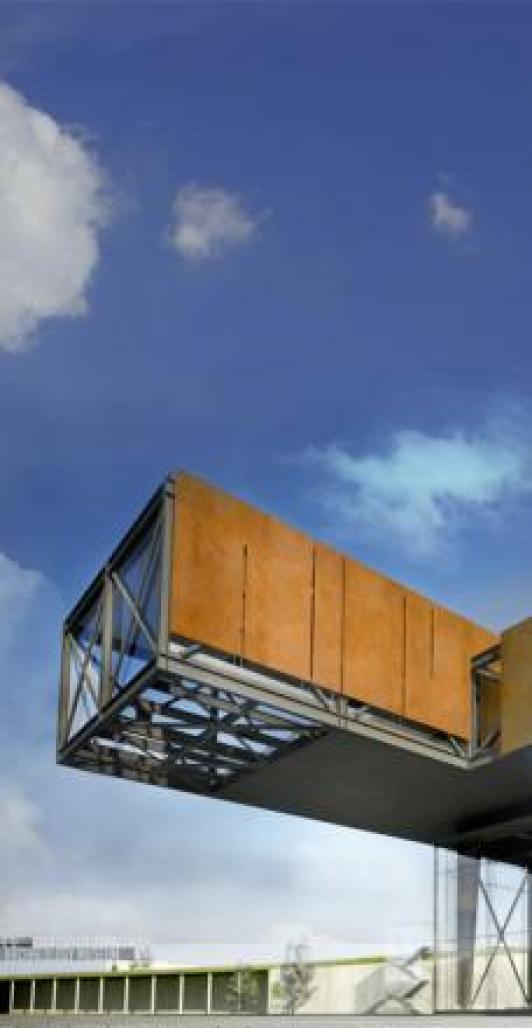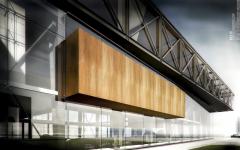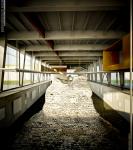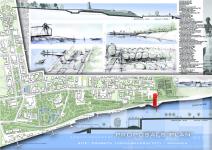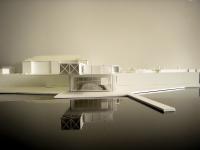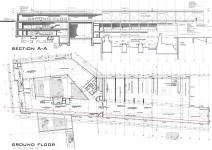The Drobeta archeology museum
The project theme left for the architect to decide, among other things, an essential element of the architectural project - the location. Although some boundaries, dictated by the property documents, existed, these have not confined in any way the possibility of deliverance of the architectural concept, regardless of it`s type. So, in the attempt of placing the building in this sensitive context, I tried to keep the memory of the place, but, in the same time to define the way of exhibiting for the visitor, using exactly this antic-modern transposable. The symbols of the place became the symbols of the museum. The regulating directions, not only roman, but also of the modern city, have define the shape of the museum. The architectural concept suggests the evocation of these key elements of the site. The roman axis give meaning to the directions - the directions become transposed into language. The relation of the museum with its objects is one of interaction, as have already seen. The imagined museum is created by its objects, but its mission must not stop here, the museum must recreate the objects. And so came the necessity of an active and continuous intervention in their protection - the "In situ Museum". As we already have seen before, the "in situ museum" approaches the most to the concept of the optimal condition in the customer - object - museum scheme. It confers the vestige its well deserved space - it includes it in the attempt to protect it, it attends it in the attempt to exhibit it, it exhibits it in the attempt to render or to explain its value. The object`s name, in this case, is Trajan`s Bridge. The Trajan`s bridge suffers in the attempt to exhibit itself. Its remains, specifically the four ending piers {the portal pier, piers no. one and two, and the abutment pier} no longer have the power of visual effect, necessary for the exhibition of the past, but the bridge pulses at symbolic level, its importance in the antic context, the political and cultural factors assure this object an undying place in the universal history. All these aspects, transposed into an well controlled scenography, will render the Trajan`s bridge it`s long lost value and positions in its relation to the viewer.
As I already stated before, I chose for the "in situ" approach, having as a weight center the vestiges of the Apollodor of Damasc`s bridge. Crossing the bridge to the Romanian side passed through the castrum. The castrum was equiped with an articulation which connected with the bridge`s floor, being the only way of reaching Romanian soil. This essential element in the defensive system is resumed in my proposal in an evocative shape, which concures with the "losir" needs of the archeological park. In the same way, the object brings on the castrum`s guard layout, trying to offer the viewer a vision of this operation. Fulfilling the initial role, it will connect the museum with another proposal of semiotic interpretation - a light variant of a protecting tower of the "pricipalis destra" gate, which, having a vertical component, will serve at the same time as a belevdere point as well as a signal.
In the concept of development and arrangement thought for the city at Danube`s shore, the proposed museum occupies, on medium term, the ending position { unfortunately, in the present stage, some areas with industrial character and inappropriate placement represents a setback for the normal course of development}. This type of positioning in a track that includes many more other objectives, gives to the museum o privileged position in its relation with the visitor - it can remain in the memory of the viewer as the route subject. This type of relation, as we have already seen, it`s not always positive, being able to transform itself in the dusty node of interaction, which we are trying to setback. The Antic Drobeta Harbor, whose remains were completely destroyed, has no way in participating in the mus
2007
2008
Drobeta Archaeology Museum by Catalin Trandafir in Romania won the WA Award Cycle 3. Please find below the WA Award poster for this project.
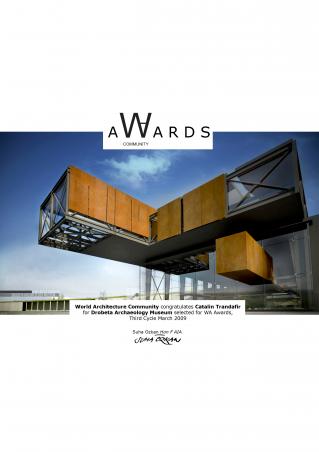
Downloaded 402 times.
Favorited 1 times
